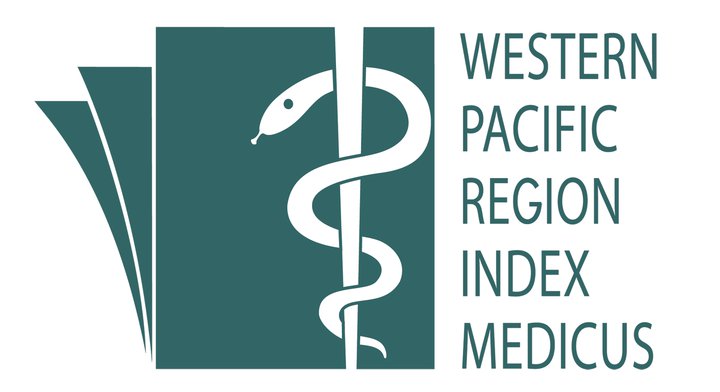Work-related stress dimensions among a subsidiary company workers of Iranian Oil Refining and Distribution Company
Keywords:
Work-related stress - worker- occupational healthAbstract
Background: Work-related stress and its causes are among the most important issues which can seriously challenge organizational efficiency and employees' health. Different occupational environments and groups have different levels of job stress. The present study aimed to investigate relationships between job stress and its dimensions with three occupational groups (administrative, administrative-operational, and operational) among a subsidiary company workers of Iranian Oil Refining and Distribution Company.
Methods: The present study had descriptive-analytical and cross-sectional type and was conducted among 468 out of 503 employees (with entry condition of a year of work experience as well as an official and contractual membership) volunteered to participate in research. Data collection tools included demographic questions and job stress questionnaire as well as human resource department information to determine occupational group of employees. Descriptive statistics, statistical tests, Independent test, and one-way ANOVA in addition to SPSS 21 software were used for data analysis.
Results: There were significant relationships between age, education levels, work experience and smoking with mean score of job stress (P-value <0.05). Mean score of employees' job stress in operational occupation group was significantly higher than other two occupational groups (P-value=0.004), and there were significant relationships between employees' occupational group variables with five dimensions of job stress (demand, relationships and role, managerial support, and peer support) (P-value<0.05). There were not any significant relationships between other variables and job stress (P-value>0.05).
Conclusion: Exposure to different occupational harmful agents, facing with different safety risks, being far from family, heavy workload, and uncertain employee roles have significantly increased job stress in both operational and executive occupation groups compared to other two occupational groups; hence, there is a positive correlation between high job stress and operational jobs.
References
Milutinović D, Golubović B, Brkić N, Prokeš B. Professional stress and health among critical care nurses in Serbia. Archives of Industrial Hygiene and Toxicology. 2012;63(2):171-80.
Hoel H, Sparks K, Cooper CL. The cost of violence/stress at work and the benefits of a violence/stress-free working environment 2006 [Available from: www.ilo.org.
Gharibi V, Malakouti J, Arsang-Jang S, GHolami A. Prevalence of occupational stress and its relationship to individual characteristics in tunneling industry workers. Journal of Health System Research. 2013;9(1):57-65.
Mohammadfam I, Bahrami AR, Golmohammadi R, Fatemi F, Mahjub H. The relationship between job stress and occupational accidents in an automobile manufacturing company. Journal of Kermanshah University of Medical Sciences (J Kermanshah Univ Med Sci). 2009;13(2).
Fesharaki MG. The relationship between geographical areas, personality, socio-economical status and demographical factors with job stress. International Journal of Behavioral Sciences. 2011;5(2):151-6.
Gharibi V, Mokarami H, Taban A, Aval MY, Samimi K, Salesi M. Effects of work-related stress on work ability index among Iranian workers. Safety and health at work. 2016;7(1):43-8.
Khosravi Y, Asilian-Mahabadi H, Hassanzadeh-Rangi N, Hajizadeh E, Gharibi V. Why construction workers involve in unsafe behavior? Development and cross-validation of a structural model. Iran Occupational Health Journal. 2015;12(1):27-37.
Brešić J, Knežević B, Milošević M, Tomljanović T, Golubović R, Mustajbegović J. Stress and work ability in oil industry workers. Archives of Industrial Hygiene and Toxicology. 2007;58(4):399-405.
Mika F, Dalida R, Kapanadze ET, Visnjic-Pichler N, DeSanctis S, editors. Stress and Social Anxiety Assessment among Offshore Personnel in Oil and Gas Industry. International Conference on Health, Safety and Environment in Oil and Gas Exploration and Production; 2012: Society of Petroleum Engineers.
PSYCHOSOCIAL EFFECTS OF OFFSHORE OIL AND GAS WORK (https://www.researchgate.net/publication/259218747_PSYCHOSOCIAL_EFFECTS_OF_OFFSHORE_OIL_AND_GAS_WORK) [Internet]. 2010.
Mackay CJ CR, Kelly PJ, Lee S & Mccaig RH. Management standards’ and work-related stress in the United Kingdom: policy background and science. Work & Stress. 2004;18(2):91-112.
AZAD ME, GHOLAMI FM. Reliability and validity assessment for the HSE job stress questionnaire. JOURNAL OF BEHAVIORAL SCIENCES (JBS). 2011.
Guidotti TL. Human factors in firefighting: ergonomic-, cardiopulmonary-, and psychogenic stress-related issues. International archives of occupational and environmental health. 1992;64(1):1-12.
Lindqvist K, Schelp L, Timpka T. Gender aspects of work-related injuries in a Swedish municipality. Safety science. 1999;31(3):183-96.
Heydarabadi AB, Mohammadpuor H, Madvari ARF, Qarkhani MM, Madvari RAF, Afshin AA. Study the status of job stress and work-related stressors among the employees of a Spinning industry. Journal of Health in the Field ØŒShahid Beheshti University of Medical Sciences, School of Health. 2016;3(1).
Nasiry Zarrin Ghabaee N, Talebpour Amir F, Hosseini Velshkolaei M, Rajabzadeh R. Quality of life and its relationship to the Job stress in among nursing staff in Hospitals of Sari, in 2015. 2 Journal of Nursing Education. 2016;5(2):40-8.
Carroll MD, Kit BK, Lacher DA, Yoon S. Total and high-density lipoprotein cholesterol in adults: National Health and Nutrition Examination Survey, 2009-2010: US Department of Health and Human Services, Centers for Disease Control and Prevention, National Center for Health Statistics; 2012.
Frankenhaeuser M, Lundberg U, Fredrikson M, Melin B, Tuomisto M, Myrsten AL, et al. Stress on and off the job as related to sex and occupational status in whiteâ€collar workers. Journal of Organizational Behavior. 1989;10(4):321-46.
Cooper CL, Sutherland VJ. Job stress, mental health, and accidents among offshore workers in the oil and gas extraction industries. Journal of Occupational and Environmental Medicine. 1987;29(2):119-25.
Azadmarzabadi E, Gholami Fesharaki M. The relationship between geographic areas, personality, social status, economic and demographic factors and job stress Journal of Behavioral Sciences 2011;5(2):151-6.
Lotfizadeh m, Noor-hassim i, Habibi a. Analysis of occupational stress and the related issues among employees of ÙEsfahan steel company (ESCO), Iran (2009). Journal of Shahrekord Uuniversity of Medical Sciences. 2011;13(5):37-45.
Spielberger CD. Job stress survey. Wiley Online Library 1999.
Spector PE, Cooper CL, Aguilarâ€Vafaie ME. A comparative study of perceived job stressor sources and job strain in American and Iranian managers. Applied Psychology. 2002;51(3):446-57.
Sapp AL, Kawachi I, Sorensen G, LaMontagne AD, Subramanian S. Does workplace social capital buffer the effects of job stress? A cross-sectional, multilevel analysis of cigarette smoking among US manufacturing workers. Journal of occupational and environmental medicine/American College of Occupational and Environmental Medicine. 2010;52(7):740.
Azagba S, Sharaf MF. The effect of job stress on smoking and alcohol consumption. Health economics review. 2011;1(1):15.
Corneil W, Beaton R, Murphy S, Johnson C, Pike K. Exposure to traumatic incidents and prevalence of posttraumatic stress symptomatology in urban firefighters in two countries. Journal of occupational health psychology. 1999;4(2):131.
Cordeiro R, & Dias, A. Stressful life events and occupational accidents. Scand J Work Environ Health, Retrieved from wwwncbinlmnihgov/pubmed/1627395. 2005;31(5):336-42.
de Jonge J, Dormann C, Fraccaroli F, Sverke M. Why Is My Job So Stressful? Characteristics, Processes and Models of Stress at Work. An Introduction to Work and Organizational Psychology: An International Perspective. 2017:80-101.
PURNAWATI S, KAWAKAMI N, SHIMAZU A, SUTJANA DP, ADIPUTRA N. Effects of an ergonomics-based job stress management program on job strain, psychological distress, and blood cortisol among employees of a national private bank in Denpasar Bali. Industrial health. 2016:2015-0260.
Shontz JL. A Different Type of Project Crashing: Sources of Occupational Stress within the Project Management Profession and the Influence of Occupational Stress on the Job Satisfaction and Turnover Intention of Project Managers: Sullivan University; 2016.
Downloads
Additional Files
Published
How to Cite
Issue
Section
License
IJPHR applies the Creative Commons Attribution (CC BY) license to articles and other works we publish. If you submit your paper for publication by IJPHR, you agree to have the CC BY license applied to your work. Under this Open Access license, you as the author agree that anyone can reuse your article in whole or part for any purpose, for free, even for commercial purposes. Anyone may copy, distribute, or reuse the content as long as the author and original source are properly cited. This facilitates freedom in re-use and also ensures that IJPHR content can be mined without barriers for the needs of research.





